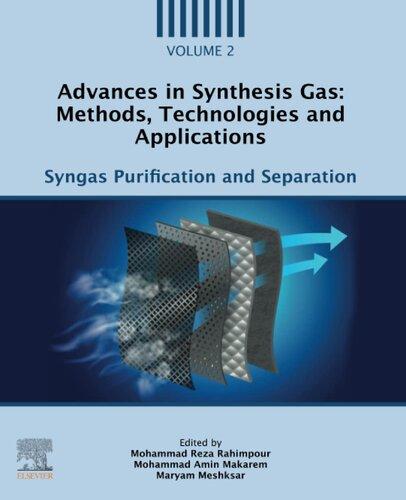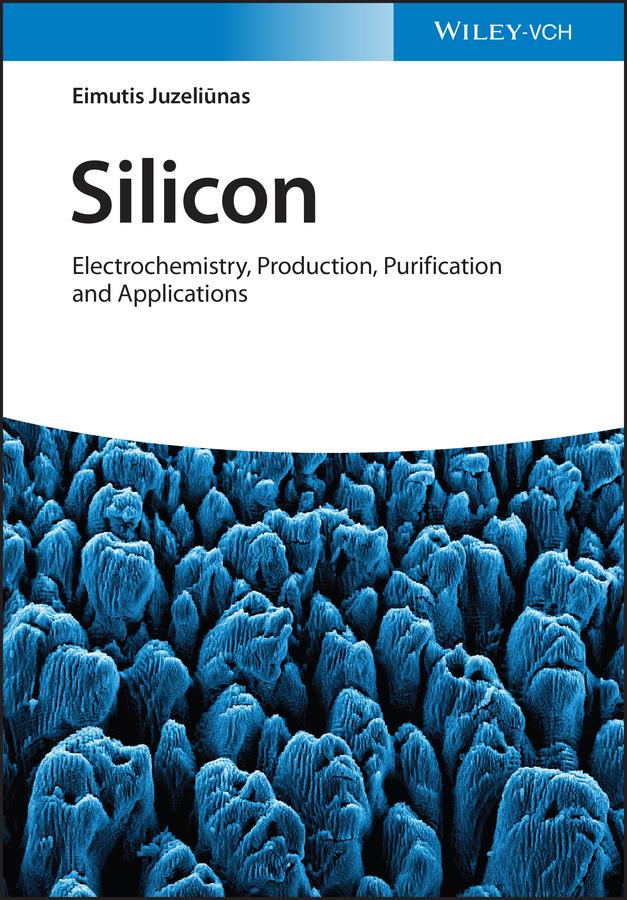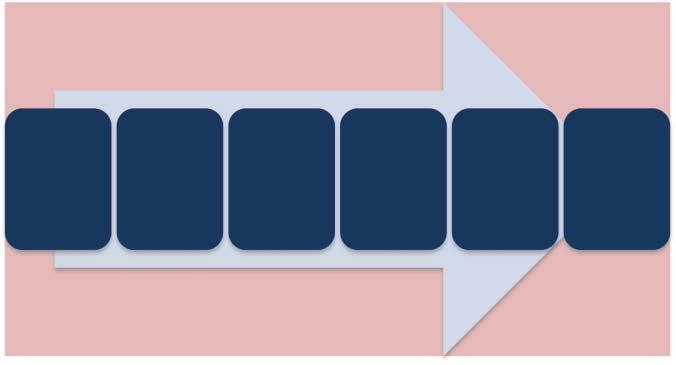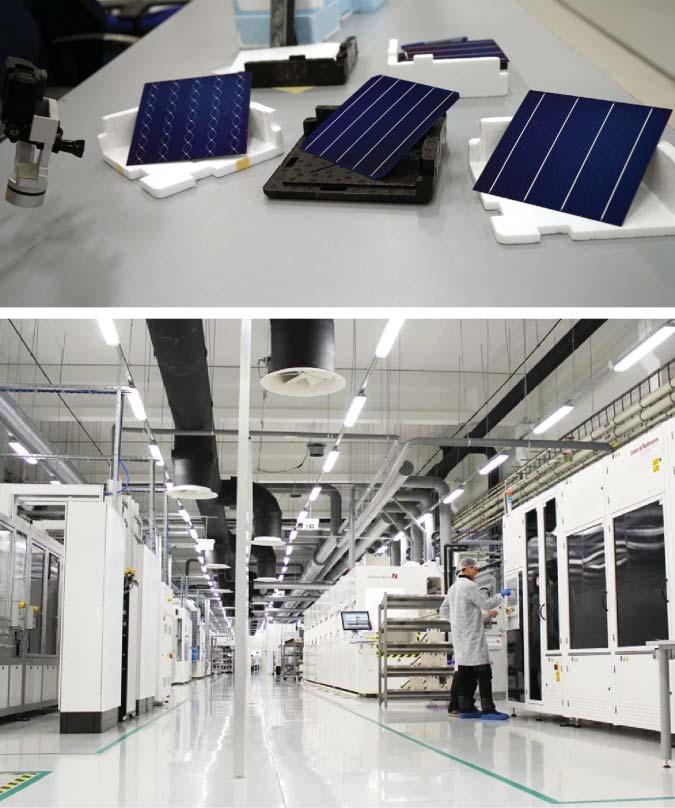Visit to download the full and correct content document: https://ebookmass.com/product/silicon-electrochemistry-production-purification-and-a pplications-eimutis-juzeliunas/

More products digital (pdf, epub, mobi) instant download maybe you interests ...

Silicon Containing Hybrid Copolymers: Synthesis, Properties, and Applications Zibiao Li
https://ebookmass.com/product/silicon-containing-hybridcopolymers-synthesis-properties-and-applications-zibiao-li/

Current Developments in Biotechnology
and Bioengineering. Production,
Isolation
and Purification of Industrial Products 1st Edition Ashok Pandey
https://ebookmass.com/product/current-developments-inbiotechnology-and-bioengineering-production-isolation-andpurification-of-industrial-products-1st-edition-ashok-pandey/

Inorganic and composite fibers: production, properties, and applications Kyosev
https://ebookmass.com/product/inorganic-and-composite-fibersproduction-properties-and-applications-kyosev/

Biomass-Derived Carbon Materials: Production and Applications Alagarsamy Pandikumar
https://ebookmass.com/product/biomass-derived-carbon-materialsproduction-and-applications-alagarsamy-pandikumar/

Advances in Synthesis Gas: Methods, Technologies and
Applications,
Volume 2: Syngas Purification and Separation
Mohammad Reza Rahimpour
https://ebookmass.com/product/advances-in-synthesis-gas-methodstechnologies-and-applications-volume-2-syngas-purification-andseparation-mohammad-reza-rahimpour/

Nanocarbon electrochemistry First Edition Foord
https://ebookmass.com/product/nanocarbon-electrochemistry-firstedition-foord/

Silicon Carbide Biotechnology, Second Edition: A Biocompatible Semiconductor for Advanced Biomedical Devices and Applications Stephen Saddow Ph.D
https://ebookmass.com/product/silicon-carbide-biotechnologysecond-edition-a-biocompatible-semiconductor-for-advancedbiomedical-devices-and-applications-stephen-saddow-ph-d/

Thermodynamics and Applications in Hydrocarbon Energy Production Abbas Firoozabadi
https://ebookmass.com/product/thermodynamics-and-applications-inhydrocarbon-energy-production-abbas-firoozabadi/

Sustainable Water Purification M. R. Islam
https://ebookmass.com/product/sustainable-water-purification-m-rislam/

Electrochemistry,Production,PurificationandApplications
EimutisJuzeliunas
Author
Prof.EimutisJuzeli¯unas
CenterforPhysicalSciencesand Technology
DepartmentofElectrochemical
Materials
SauletekioStr3 10257Vilnius Lithuania
CoverImage:©Georgy Shafeev/Shutterstock
Allbookspublishedby WILEY-VCH arecarefully produced.Nevertheless,authors,editors,and publisherdonotwarranttheinformation containedinthesebooks,includingthisbook, tobefreeoferrors.Readersareadvisedtokeep inmindthatstatements,data,illustrations, proceduraldetailsorotheritemsmay inadvertentlybeinaccurate.
LibraryofCongressCardNo.: appliedfor
BritishLibraryCataloguing-in-PublicationData Acataloguerecordforthisbookisavailable fromtheBritishLibrary.
Bibliographicinformationpublishedby theDeutscheNationalbibliothek TheDeutscheNationalbibliotheklists thispublicationintheDeutsche Nationalbibliografie;detailedbibliographic dataareavailableontheInternetat <http://dnb.d-nb.de>.
©2023WILEY-VCHGmbH,Boschstraße12, 69469Weinheim,Germany
Allrightsreserved(includingthoseof translationintootherlanguages).Nopartof thisbookmaybereproducedinanyform–by photoprinting,microfilm,oranyother means–nortransmittedortranslatedintoa machinelanguagewithoutwrittenpermission fromthepublishers.Registerednames, trademarks,etc.usedinthisbook,evenwhen notspecificallymarkedassuch,arenottobe consideredunprotectedbylaw.
PrintISBN: 978-3-527-34897-8 ePDFISBN: 978-3-527-83190-6 ePubISBN: 978-3-527-83192-0 oBookISBN: 978-3-527-83191-3
Typesetting Straive,Chennai,India
Tothememoryofmyparents–motherZofijaandfatherEnrikas and Tomybelovedfamily–wifeKaterinaandsonsLaimisandPovilas, whoinspiredandsupported.
Contents
Preface xiii
ListofAbbreviations xv
AbouttheAuthor xix
1Introduction 1
References 3
2SiliconElectrochemistry–TowardLow-CarbonEconomy 5
2.1SiliconforEnergyStorage–ElectrochemicalBatteries 6
2.2SiliconforEnergyConversion–PhotovoltaicDevices 9
2.2.1SolartoElectricity 9
2.2.2Solar-to-ChemicalConversion 15
References 17
3BriefHistoricalOverviewofSiliconProduction. Metallurgical-GradeSilicon 21
References 26
4PhysicalandChemicalPropertiesofSilicon 27
References 30
5SiliconRefining:FromMetallurgical-Gradeto Electronic-Grade 33
5.1PurificationBasedonDirectSiChlorination 34
5.2TheSiemensProcess 35
5.3TheUnionCarbideProcess 37
5.4TheEthylProcess 38
5.5ElectrorefininginMoltenSalts 40
5.6ZoneRefining,AcidLeaching 43
References 45
Contents
6SiliconElectrowinningandElectrodepositionof ThinLayers 49
6.1ElectrodepositioninMoltenFluoride,Chloride,andOxide Electrolytes 49
6.2SubstrateMaterialsforSiliconElectrodeposition 55
6.3ElectrodepositionofPhotoactiveSiliconandp–nJunction 56
6.4ElectrodepositionofSiliconfromIonicLiquidsandOrganicSolvents 60
6.5PurityConcernsandSolutions 66 References 69
7PhotoelectrochemistryandNanogravimetryofSiandSi-Oxide Electrodes 77
7.1TopicalityofSiPhotoelectrochemicalResearch 77
7.2BasicParameters:Photopotential,Photocurrent,and Photocapacitance 80
7.3PhotoelectrochemicalFeaturesoftheSi-OxideElectrodes 85
7.3.1Si–SiO2 Electrode 86
7.3.2Si–HfO2 Electrode 93
7.3.3Si–Al2 O3 Electrode 105
7.4QuartzCrystalNanogravimetry 106 References 112
8Electro-DeoxidationofSolidCompoundsinMoltenSalts 121 References 127
9VoltammetryandBasicReactionsofSiliconElectrodein MoltenCaCl2 129 References 140
10Si–SiO2 ElectrodeinMoltenCaCl2 145 References 147
11FormationofSiliconOxideLayer 149 References 155
12 InSitu StudiesofSiO2 → SiConversion–SynchrotronX-ray Diffraction 159 References 162
13MoltenOxideElectrochemistryatUltra-High Temperatures 165 References 172
14SiliconSurfaceStructuring 175
14.1ElectrochemicalStructuring,PorousSilicon 175
14.2Chemical–PhysicalStructuring 178
14.2.1ChemicalEtching 178
14.2.2LaserEngineering 180
14.2.3ReactiveIonEtching 181
14.2.4PlasmaImmersionIonImplantationEtching 182
14.2.5StainEtching 182
14.2.6Metal-AssistedChemicalEtching 182
14.2.7Vapor–Liquid–SolidMethod 186
14.2.8NanostructuringBasedonPorousAluminaTemplate 186
14.3BlackSilicon 190
References 195
15ElectrochemicalSiSurfaceStructuringandFormationofBlack SiliconinHigh-TemperatureMoltenSalts 203
15.1AnodicandCathodicProcessinginMoltenCaCl2 203
15.2MicrocolumnarandAmorphousStructures 205
15.3ElectrodeoxidationofThinSiO2 Layers 207
15.4GlobularStructures 208
15.5BlackSiliconfromMoltenSalts 212
15.6ElectrochemicalSynthesisofNanowires:ImplicationsforLi-Ion Batteries 216 References 221
16SiliconCompositions–PerspectivesforSemiconductor Production 225
16.1SiliconCarbide 225
16.2Silicides 231 References 233
17SiliconPhoto-ElectrodesforWaterSplittingandTheir Protection 237
17.1Relevance,BasicPrinciples,andSemiconductorMaterialsfor Photo-Electrodes 237
17.2ProtectionofSiliconPhotoelectrodesinSolar-FuelGenerators 243
17.2.1ProtectionofSiPhotoanodes 246
17.2.2ProtectionofSiPhotoanodesforHalideReduction 247
17.2.3ProtectionofSiPhotocathodes 249
References 251
18Conclusions,Outlook,andChallenges 257
Index 263

TheodorvonGrotthussmedal.Author:PetrasRepšys.ProducedbyLietuvosmonetu ˛ kalykla(LithuanianMint)
“Thoughlightilluminatesdarkness,nothingisdarkerthanthelight.”
TheodorvonGrotthuss(1785–1822)
Preface
Siliconliesattheheartofmoderntechnology.Siliconcanbeusedinvariousfields, suchasoptoelectronics,sensors,batteries,opticalfibers,photoelectrochemical watersplitting,terahertzemitters,andnumerousotherapplications.Asanabundant,non-toxic,efficient,androbustmaterial,siliconwilldominatethesolarenergy marketatleastforthenextfewdecades.
Electrochemistrydealswiththechemicaltransformations,whichareinducedby anelectriccurrent,or viceversa –withthetransformations,whichgenerateanelectriccurrent.Theseprocessesprovideanopportunitytostoreorproduceelectricity withaminimumcarbonfootprint.Electrochemistrycan,therefore,significantly contributetolow-carboneconomy;itoffersanadvancementinsustainableenergy solutionsandenvironment-friendlytechnologies.
Intheearly2000s,V.Lehman(2002)andX.G.Zhang(2004)publishedseveral booksonsiliconelectrochemistry.Sincethen,variousbreakthroughdirectionsin siliconelectrochemistryhaveemerged.Forinstance,luminescentporoussilicon nanoparticleswereelectrochemicallyproducedandappliedasthecarriersof thedrugpayload invivo.Electrochemicalsiliconsurfacemodificationsincreased theefficiencyofphotovoltaicdevicesusedforsolarenergyharvestorforthe productionofsolarfuel.Siliconphotoelectrodeshavebeensuccessfullydeveloped forhydrogenandoxygenproductionbywatersplittingaswellasCO2 reduction. ElectrochemicallyproducedSisurfacenano-architecturesshowedanintrinsic quantumconfinementeffect.Environment-friendlyandsecuresolutionsoffered siliconelectrochemistryinhigh-temperaturemoltensalts.Electrochemicalsilicon reductionfromsilicainhigh-temperaturemoltensaltshasbeendiscovered.Electrochemicaldepositionofdopedsiliconaswellasformationofp-–njunctionhave alsobeendemonstrated.
Thisbookaimstosummarizetheexperimentalandtechnologicalworkdone inrecentdecadesonsiliconelectrochemistry,production,andpurification,highlightingsubjectsoftechnologicalsignificanceandfutureperspectives.Thebook aimstobehighlybeneficialtothecommunitiesofchemistsandmaterialscientists workinginacademiaandindustrialsectors,especiallyinthefieldofsustainable energydevelopment:photovoltaics,lightharvestingefficiency,solar-to-chemical conversion,productionofsolar-gradesiliconaswellasproductionofbatteries, photoelectrodes,orsilicon-basedsemiconductors.Thesecondarymarketofthis
xiv Preface
bookincludestheeducationandsocio-economicsectorswithfocalpointsonsuch topicalitiesasthereductioninglobalclimatechange,replacementoffossilfuelsby renewableenergy,andstrategiesoflow-carboneconomy.
Vilnius,Lithuania
June,2022
References
EimutisJuzeliunas
Lehman,V.(2002). ElectrochemistryofSilicon.Instrumentation,Science,Materialsand Applications.Wiley-VCH. Zhang,X.G.(2004). ElectrochemistryofSiliconandItsOxide.KluwerAcademic Publishers.
ListofAbbreviations
3PIthree-phaseinterface(interlines)
AFMatomicforcemicroscopy
ALacetonitrile
Al-BSFaluminumbacksidefieldtechnology
ALDatomiclayerdeposition
BCEbeforethecommon(orcurrent)era
BMIm1-butyl-3-methylimidazolium
BMPy1-butyl-3-methylpyridinium
BMPyrr N -butyl-N -methylpyrrolidinium
b-Siblacksilicon
CEcontactingelectrode
CNTcarbonnanotubes
COP21ParisClimateConference
CVcyclicvoltammetry
CVDchemicalvapordeposition
CZCzochralskiprocess
DMAE2-dimethylaminoethanethiol
DMSdimethylsulfide
DRCDemocraticRepublicoftheCongo
DREdamageremovaletching
ECTheEuropeanCommission
EDX(EDS)energy-dispersiveX-rayspectroscopy
EISelectrochemicalimpedancespectroscopy
EMIm1-ethyl-3-methylimidazolium
EMPyrrN-ethyl-N -methylpyrrolidinium
EQCMelectrochemicalquartzcrystalmicrobalance
EUtheEuropeanUnion FAPtris(pentafluoroethyl)-trifluorophosphate
FBRfluidizedbedreactor
fsfemtosecond
FTIRFouriertransforminfraredspectroscopy
FTOfluorine-dopedtinoxide
GDMSglowdischargemassspectrometry
xvi ListofAbbreviations
GDPGrossdomesticproduct
GI-XRDgrazingincidenceX-raydiffractometry
ICEinitialCoulombicefficiency
ICPinductivecoupledplasma
ILionicliquid
IPAisopropylalcohol
IRENAInternationalRenewableEnergyAgency
ISFETion-sensitivefieldeffecttransistor
ITOindiumtinoxide
LCDliquid-crystaldisplay
LIBlithium-ionbattery
M,Memetal,metallic
MACEmetal-assistedchemicaletching
MG-Simetallurgical-gradesilicon
MOEmoltenoxideelectrolysis
MSmagnetronsputtering
MTmetricton
MWTmetalwrapthrough
NHEnormalhydrogenelectrode
NMRnuclearmagneticresonance
NPsnanoparticles
nsnanosecond
NTDneutrontransmutationdoping
NWsnanowires
P-Siporoussilicon
PECphotoelectrochemicalcells,photoelectrochemistry
PEDOT:PSSpoly(3,4-ethylenedioxythiophene):poly(styrenesulfonate)
PERCpassivatedemitterandrearcontact
PIIIplasmaimmersionandionimplantation
PVphotovoltaic(s)
PVDphysicalvapordeposition
QCNquartzcrystalnanobalance
R&Dresearchanddevelopment
REreferenceelectrode
RFMSradiofrequencymagnetronsputtering
RIEreactiveionetching
Si-Hhydrogen-terminatedsiliconsurface
Si-Ffluoride-terminatedsiliconsurface
Si-OHhydroxideterminatedsiliconsurface
SCRspace-chargeregion
SEMscanningelectronmicroscopy
SERSsurface-enhancedRamanspectroscopy
SoG-Sisolar-gradesilicon
SPsolubilityproduct
STCsilicontetrachloride
SWIRshort-wavelengthinfrared
TBABtetrabutylammoniumbromide
TBACtetrabutylammoniumchloride
TBMAtributyl(methyl)ammonium
TCStrichlorsilane
TEACtetraethylammoniumchloride
TEOStetraethylorthosilicate
TFOtrifluoromethylsulfonate
TFSAbis(trifluoromethylsulfonyl)amide
TFSIbis(trifluoromethylsulfonyl)imide
TG-DTAthermogravimetryanddifferentialthermalanalysis
THFtetrahydrofuran
TMAHtetramethylammoniumhydroxide
TMHA N -trimethyl-N -hexylammonium
TPACtetrapropylammoniumchloride
TRLtechnologyreadinesslevel
UPDunderpotentialdeposition
UTEultra-hightemperatureelectrochemistry
VLSvapor–liquid–soliddeposition
XRDX-raydiffraction
XPSX-rayphotoelectronspectroscopy
ListofAbbreviations xvii
AbouttheAuthor

EimutisJuzeliunas, photobyJ.Stacevi ˇ cius/ LithuanianNational Radioand Television,LRT.
ProfessorDr.EimutisJuzeliunasisaprincipalresearch associateandaheadoftheDepartmentofElectrochemical MaterialsScienceattheCentreforPhysicalSciencesand TechnologyinVilnius,Lithuania.Heworkedpreviously asarectorofKlaip ˙ edauniversity(2014–2018)andadirectoroftheInstituteofChemistryinVilnius(2001–2009). HewasaMarieCurieInternationalFellowoftheEuropeanCommissionattheUniversityofCambridge,UK (2009–2011,2013–2014)wherehecarriedoutresearchon siliconelectrochemistryinhigh-temperaturemoltensalts. HealsowasaFulbrightfellowattheVanderbiltUniversity (USA),afellowoftheAmericanChemicalSocietyatthe PennsylvaniaStateUniversity(USA),andanAlexander vonHumboldtfellowatthecompanyDECHEMAe.V. (Germany).Hismainresearchareaiselectrochemical materialsscience;currentresearchinterestsaresiliconelectrochemistryforenergy applications,environmentalandmicrobiologicaldegradationofmetals(corrosion), physicalvapordepositionofresistantalloys,andnanogravimetryofelectrochemical processes.
Introduction
Worldproductionofsilicon(Si)reached(2010–2020)abouteightmillionsofmetric tonnesinthelastdecade.Thisquantitywasproducedmainlybythecarbothermic silica(SiO2 )reduction.Theprocessrequiresalargesupplyofenergyandemits carbonoxides(COx ).Afundamentalchallengeistheelectrochemicalsiliconextractionfromsilicaorothersolidsusingelectricityinsteadofharmfulchemistries. Zerocarbonfootprintcouldbeattainedwhenusingelectronsasabsolutelyclean reductionagentsgeneratedbyrenewablesources.Electrochemicalmethodscanbe usedonawidescaleofapplications:extraction,purification,surfaceengineering, orthin-filmtechnologies.Thus,siliconelectrochemistryhasthepotentialto significantlycontributetolow-carboneconomy;thisfieldoffersanadvancement inenvironmentallyfriendlyandsecuretechnologiesofenergygenerationand storage.
Breakthroughresearchtopicshaveemergedinsiliconelectrochemistryinrecent decades.Theelectrochemicalformationofporoussilicon(P-Si)wasdiscovered in1956(Uhlir1956).Canhamreportedin1990thatavisibleroom-temperature photoluminescencefromP-SilayerformedelectrochemicallyonSiwafer(Canham 1990).ThediscoveryinspiredwidestudiesofP-Siforapplicationsinoptoelectronics,lasers,andsensors.Luminescentporoussiliconnanoparticleswereappliedas thecarriersofthedrugpayload,whoseinfraredluminescenceenabledmonitoring oftheparticles invivo (Parketal.2009).Electrochemicalnano-micro-structuring ofsiliconhasbeenwidelyinvestigated.Thesurfacemodificationsincreasedthe efficiencyofphotovoltaic(PV)devicesusedforsolarenergyharvestorforproductionofsolarfuel.Siliconphotoelectrodeshavebeensuccessfullyusedforhydrogen andoxygenproductionbywatersplittingaswellasCO2 reduction(Sunetal. 2014).ElectrochemicallyproducedSisurfacenano-architecturesshowedintrinsic quantumconfinementeffect.Electrochemicalreductionofsilicondioxidetosilicon inamoltensaltelectrolytehasbeenreported,whichformedthebasisfornew processesinsiliconsemiconductortechnologyandhigh-puritysiliconproduction (Nohiraetal.2003).Environmentallyfriendlyandsecuresolutionsofferedsilicon electrochemistryinhightemperaturemoltensalts(JuzeliunasandFray2020). Electrochemicaldepositionofdopedsiliconaswellasformationofp–njunction hasbeendemonstrated(Zouetal.2017,2019;Pengetal.2018).Theapproachhas
Silicon:Electrochemistry,Production,PurificationandApplications,FirstEdition.EimutisJuzeliunas. ©2023WILEY-VCHGmbH.Published2023byWILEY-VCHGmbH.
thepotentialofreducingcapitalcostandenergyconsumptionforfabricationof solarcellswhencomparedwiththeconventionalmanufacturingprocess.
Thisbookfeaturesrecentachievementsinsiliconelectrochemistry,particularly, inelectrochemicalsiliconextraction,purification,andprocessinginhightemperaturemoltensalts.Theintroductorypartofthebook(Chapters2–4)is devotedtogeneralaspectsofsiliconapplication.Ahistoricaloverviewofsilicon productionisprovided,anditsimportanceinalow-carboneconomyisconsidered. Chapter4addressesthephysicalandchemicalpropertiesofsilicon,whicharemost relevantforelectrochemicalmaterialsscience.Thesubsequentmaterialismore specific.Chapter5describesthemajortechnologiesusedforsiliconpurification suchasSiemens,UnionCarbide,orEthylCorporationprocesses.Thischapter alsoprovidestheprinciplesofelectrorefininginhigh-temperaturemoltensalts, highlightingtheadvantagesanddisadvantageswhencomparedwithconventional industrialprocesses.
Chapter6addresseselectrodepositionofthinlayersanddiscussesthepossibility ofreplacingmultipleprocessesofSiwaferfabricationwithone-stepelectrochemicaldeposition.Traditionalmanufacturingentailsanenergy-intensiveandenvironmentallyunfriendlyproductionofmetallurgicalgradesilicon(MG-Si),aswellas itsupgradetosolargradesilicon(SoG-Si),ingotcasting,andslicing.Electrodepositionfrommoltenfluoride,chloride,andoxideelectrolytesonvarioussubstratesis discussed.Arecentlyproposedstrategyforelectrodepositionofphotoactivesilicon andp–njunctionishighlightedindetail.Silicondepositionfromionicliquids–the room-temperaturemoltensalts–isalsodiscussedinthischapter.Significantattentionisgiventothepuritylevelofsiliconelectrodeposits,whichareessentialfor photo-electrochemicalapplications.
Chapter7disclosesphotoelectrochemical(PEC)propertiesofsilicon-oxide electrodescoatedwithultrathinfilmsofsilica(SiO2 ),hafnia(HfO2 ),andalumina (Al2 O3 ).ThepivotalconceptofPECmethodologyistoobtaininformation,which correlateswiththatofthesolid-statecellssothatthereisnopriorneedtodesigna solarcellthatcharacterizesSisurfacephoto-responsiveness.Significantattention isgiventostudiesofSi-oxideinterfacialstabilitybythequartzcrystalnanobalance (QCN)–asensitivemassdetector,whichprovidesinformationabouttheelectrode masschangewithnanogramresolution insitu andinrealtime.
Deoxidationofmetaloxidesinamoltensaltelectrolytewasdiscoveredinthe year2000(Chenetal.2000).TheprocesswasnamedtheFFCCambridgeprocess. Simplicityandrapidityoftheprocesshaveattractedglobalinterest.Over30 metalsorsemimetalswereextractedfromsolidcompoundsbythisenergy-efficient andenvironment-friendlyroute.Chapter8addressestheFFCprincipleandits applicationinsiliconreductionfromsilica.Theelectrochemicalextractionprovides agreenalternativetoconventionalcarbo-thermicsiliconproduction.Chapters9–12 providefurtherdetailsonSi–SiO2 conversioninmoltensalts.Voltammetry,basic reactions,and insitu studiesbysynchrotronX-raydiffractionarediscussed,and experimentalconditionsusedbymanyauthorsaresummarized.
Technologicalopportunitiescarryouttheoperationatultra-hightemperatures andatliquidstateofsilicafeedstock.Suchprocessesarereferredtoasmoltenoxide
References 3 electrolysis(MOE).Chapter13discussestheMOEprinciplesofsiliconextractionin aliquidstate.
Thisstudyfocusedmajorlyonelectrochemicalsurfaceengineering.Chapter 14discussesthechemical–physicalmethodsofsiliconsurfacestructuring,such aslaserengineeringandvariousetchings:chemical,photoelectrochemical,reactiveion,plasmaimmersionionimplantation,andmetal-assistedchemical.The vapor–liquid–solidmethodisalsodiscussed.
Chapter15featuresacomprehensivematerialobtainedonelectrochemical Sistructuringathigh-temperaturemoltensaltsincludingformationofblack silicon(B-Si).B-Siisanano-micro-porousmaterial,whicheffectivelyabsorbsthe lightonawiderangeofwavelengths.ElectrochemicalSistructuringinmolten saltsisattractiveduetoitsenvironmentalfriendliness,technicalsimplicity,and cost-effectiveness.
Thebookalsooutlinestheperspectivesofelectrochemicalsynthesisofsemiconductors(Chapter16),thebasicprinciplesandmaterialsforphoto-electrodes,and thepreservationofsolar-fuelgenerators(Chapter17).
Inconclusion,whilesiliconelectrochemistryoffersarangeoftechnologicalopportunities,mostofthedevelopmentsarestillontheconceptualorbench-scalelevel. Asaresult,viabletechnologicaldevelopmentsarestillpending.
References
Canham,L.T.(1990).Quantumwirearrayfabricationbyelectrochemicalandchemical dissolution. Appl.Phys.Lett. 57:1046–1048.https://doi.org/10.1063/1.103561.
Chen,G.Z.,Fray,D.J.,andFarthing,T.W.(2000).Directelectrochemicalreductionof titaniumdioxidetotitaniuminmoltencalciumchloride. Nature 407:361–364. https://doi.org/10.1038/35030069.
Juzeliunas,E.andFray,D.(2020).Siliconelectrochemistryinmoltensalts. Chem.Rev. 120:1690–1709.https://doi.org/10.1021/acs.chemrev.9b00428.
Nohira,T.,Yasuda,K.,andIto,Y.(2003).Pinpointandbulkelectrochemicalreduction ofinsulatingsilicondioxidetosilicon. Nat.Mater. 2:397–401.https://doi.org/10 .1038/nmat900.
Park,J.-H.,Gu,L.,Maltzahn,G.etal.(2009).Biodegradableluminescentporoussilicon nanoparticlesfor invivo applications. Nat.Mater. 8:331–336.https://doi.org/10.1038/ NMAT2398.
Peng,J.J.,Yin,H.Y.,Zhao,J.etal.(2018).Liquid-tin-assistedmoltensalt electrodepositionofphotoresponsiven-typesiliconfilms. Adv.Funct.Mater. 28: 1703551.https://doi.org/10.1002/adfm.201870194.
Sun,K.,Shen,S.,Liang,Y.etal.(2014).Enablingsiliconforsolar-fuelproduction. Chem.Rev. 114:8662–8719.https://doi.org/10.1021/cr300459g. Uhlir,A.(1956).Electrolyticshapingofgermaniumandsilicon. BellSystemTech.J. 35: 333.https://doi.org/10.1002/j.1538-7305.1956.tb02385.x.
4 1Introduction
Zou,X.,Ji,L.,Yang,X.etal.(2017).Electrochemicalformationofap–njunctionofthin filmsilicondepositedinmoltensalt. J.Am.Chem.Soc. 139:16060–16063.https://doi .org/10.1021/jacs.7b09090.
Zou,X.,Ji,L.,Ge,J.etal.(2019).Electrodepositionofcrystallinesiliconfilmsfrom silicondioxideforlow-costphotovoltaicapplications. Nat.Commun. 10:5772. https://doi.org/10.1038/s41467-019-13065-w.
SiliconElectrochemistry–TowardLow-CarbonEconomy
Climatechangeisonethegreatestchallengestheworldfacestoday.Therenewable energy(solar,wind,water,biomass,geothermal)isconsideredasaclimatechange imperativetoday.Excessiveexploitationoffossilenergysourceshadanegative impactonclimate,economy,andeverydaylives.Thegrowingthreatfromclimate changeisapparent,suchasnaturaldisasters,halvedmassofinlandglaciers,riseof sealevel,andextinctionofnumerousterrestrialspecies.Volatileoil,gas,andcoal pricesinrecentdecadesandconcernsabouttheirsupplyfrompoliticallyunstable countriesareamongstthedriversoftheneedforalternatives,suchasrenewables.
TheEuropeanGreenDealplanwasunveiledin2019–athree-decadeeffortto maketheclimateneutralby2050(https://ec.europa.eu/info/strategy/priorities2019-2024/european-green-deal;Tammaetal.2019;Simon2019).TheCommission’sPresidentUrsulavonderLeyencharacterizedtheinitiativeas“Europe’s manonthemoonmoment”addingthat“thegrowthmodelbasedonfossilfuels andpollutionisoutofdateandoutoftouchwithourplanet”(Simon2019).The overarchingobjectiveintheplanis“ClimateneutralEurope,”whichaimstoreach net-zerogreenhousegasemissionsby2050.Theambitionfor2030iscutting-offthe emissionby50–55%.Theplanaddressesmajoractionssuchascirculareconomy, buildingrenovation,pollution-freeenvironment,strategyofecosystemsandbiodiversity,greenandhealthieragriculture,electricvehicles,andsustainablefuels, suchasbiofuelsandhydrogen.
AnotherglobalinitiativeistheParisAgreement–aninternationaltreatyon mitigationofclimatechange(https://unfccc.int/process-and-meetings/the-parisagreement/the-paris-agreement).In2015,196partiesintheParisclimateconference(COP21)adoptedanagreementtolimitglobalwarmingbelow2 ∘ Ccompared topre-industriallevels.
Suchhighlyambitiousplansledtofundamentalchangesinthewaywegenerate andusetheenergy.Electrochemicaltechnologieshaveshowngreatpotential inadvancingtheeconomy’stransitiontowardclimateneutrality.Electrochemistryprovidessustainablesolutionsinsuchfieldsasgreen-energystorageand solar-to-chemicalorsolar-to-electricityconversion.
Materialsusedinsolardevicesplayamajorroleinthecostbreakdownoftheoverallutilizationprocessofsolarenergy.Creationandsynthesisofneweffectivematerialsforsolar-energyapplications,therefore,isveryhighontheagendaofmaterials Silicon:Electrochemistry,Production,PurificationandApplications,FirstEdition.EimutisJuzeliunas. ©2023WILEY-VCHGmbH.Published2023byWILEY-VCHGmbH.
2SiliconElectrochemistry–TowardLow-CarbonEconomy
scientistsandengineers.Vastmajorityofthesolarcellsareproducedfromsilicon wherethetotalwafercostdominatesintheoverallcellcostbalance.Itisassumed thatsilicon,beinganontoxic,efficient,androbustmaterial,willplayakeyrolein thesolarenergymarketforthenextfewdecades(Schmalenseeetal.2015;Green 2016;Polmanetal.2016).Mitigationofclimatechange,asaglobaltask,couldbe achievedbyusingtechnologiesbasedontheEarth-abundantmaterials.TheabundanceofsiliconintheEarth’scrust(27%)makesitpossibletoexpandtheapplication ofthismaterialtotheterawattscaleby2050(Schmalenseeetal.2015).
2.1SiliconforEnergyStorage–Electrochemical Batteries
Electrochemistrydealswithrelationshipbetweenelectricityandchemicalchange. Typicalexampleofanelectrochemicaldeviceusedineverydaylifeisabattery–the device,whichgenerateselectricitybychemicalreactions.Batteriesarewidely usedinportableelectronics,medicaldevices,ore-mobilityincludingelectriccars. Aviceversaprocessiswhenelectricitygenerateschemicalreactions,forinstance, electroplatingofmetals.Theprocessiswidelyappliedfortheproductionofcoatings inordertoprotectmetalsandalloysfromcorrosionortoimprovetheiraesthetic appearance,aswellastodecoratethem.
Batteriesrepresentakeytechnologyforlow-carboneconomytoreduceCO2 emissionsfromtransport,power,andindustrialsectors.Batteriesareessential devicesusedtostorestationaryenergyfromsustainablesourcessuchassolaror wind.Toreachthesustainabilitytargets,batteriesmustexhibitultra-highenergy andpowerperformanceclosetotheoreticallimits.Otherrequirementsinclude outstandinglifetime,reliability,safety,andrecyclability.Importantrequirementis alsoscalabilitytoelectricitygridlevel,aswellascost-effectivenessandsustainable batteryproduction.ThecosttargetsetbytheEuropeanCommission(EC)forthe next-generationbatteriesofstationaryenergystorageisbelow0.05€/kWh/cycleby 2030.Thegrowthinglobalbatterydemandisanticipatedtomultipliedbyafactor 14× from2018to2030.Thegreatestpartofthisdemandgoestotheelectricmobility sector(Edströmetal.2020).
Lithium-ion(Li-ion)basedtechnologydominatesthecurrentbatterymarket. Lithium-ionbatteries(LIBs)arestate-of-the-arttechnologyforportableelectronics andelectricvehicles.TheNobelPrizeinchemistryhasbeenawardedtoJ.B. Goodenough,M.S.Whittingham,andA.Yoshitoin2019forthedevelopmentof LIBs.Thesebatteries,however,haveseveralshortcomings,especiallyforstationary energystorageapplications.
ApartfromLi,cobalt(Co)isakeyelectrodematerialinLi-ionbatteries.Forcathodeproduction,variousco-containingmaterialshaverecentlybeeninvestigated: LiCoO2 ,LiNix Coy Al1 x y O2 ,LiNix Mny Co1 x y O2 ,etc.(Huangetal.2021;Chuetal. 2020;Liuetal.2019a,b).Presently,about60%ofminedcobaltisusedtoproduce theLIBselectrodes.Congo(TheDemocraticRepublicoftheCongo,theDRC) alongwithZambia,Madagascar,ZimbabweandtheRepublicofSouthAfricaare
2.1SiliconforEnergyStorage–ElectrochemicalBatteries 7 miningabout70%ofworldcobalt.TheDRCisamainglobalproducer,whichmines about60%oftheworld’scobaltfeedstock.TheAmnestyInternationalorganization reportedin2016ontheviolationofhumanrightsinthiscountry–childlaborin health-endangeringmines(https://www.amnesty.org/en/documents/afr62/3183/ 2016/en).
TheECissuesperiodicallythecommunicationswithalistofcriticalraw materials,whichspecifiesthematerialsthataremostimportantfortheEC economically,alongsidehavinghighsupplyrisk.Asof2020,thelistalsoincludes thematerials,fromwhichkeycomponentsofLIBsareproduced:lithium,cobalt, andgraphite(Communication2020).Thelistindicates100%relianceofthe EuropeanUnion(EU)importonlithium,86%oncobalt,and98%onnatural graphite.ThecommunicationstatesthattheEUdemandforlithiumforelectric vehiclebatteriesandenergystoragewillincreaseby18timesin2030andalmost upto60timesin2050.Thecorrespondingfiguresforcobaltare5and15times, respectively.ThelimitedavailabilityoflithiummakesitdoubtfulwhetherLIBs manufacturingcanscaleuptosignificantlylargerproductionvolumes.
TheWorldBankprojectedthatthescenarioofglobalwarmingbelow2∘ (COP21) willincreasethedemandinmetalsforbatteryapplicationsatthelevelof1000%by 2050(WorldBank2017).Thelistofrelevantmaterialsforbatterymanufacturing includesmetalssuchasAl,Co,Fe,Pb,Li,Mn,andNi.
AnimportantconstraintofthestationaryenergystorageusingLIBsisthe continuousconsumptionofLi-ionelectrolyte,whichlimitsbothcycleandcalendar life.Anotherrestrictionliesinthelimitationsofoperatingtemperaturewindow. Theoperationrequirescomplexthermalmanagement,whichisimpracticalfor stationarystorageapplications,particularlyin“hot”countries.Thesebatteriesalso containhardlyrecyclablematerials,suchaslithium.LIBsarestillfacingsafety issues.Also,LIBsarerelativelyexpensive.
Thus,thereisgreatdemandandagreatchallengetocreateeffectivepost-Li electrochemicalenergystoragesystems.Analternativesuggestssodiumwithan electrochemicalchargetransferreactionNa ↔ Na+ + e ,whichcouldbeperformed inasolidcompound,forinstance,inachloride.Oceansprovideunlimitedsodium source,whichisforfree.
Metal-airbatteriesexploreairoxygenasamajorreactant:
Thisapproachenablesbatteryweightreduction,atthesametime,increasing thecapacityforenergystorage.Air–metaltechnologiesareattractivebecausethey aregreen,safe,andcost-efficientintermsoffeedstock.Thetechnologiespropose usageofanunlimitedsourceofoxygenfromtheatmosphere,whichisforfree. Themetal–airbatteriescanutilizevariousmetalelectrodes,e.g.Li,Zn,Al,Fe, Mg(Tongetal.2021).Ofthesemetals,Li-airbatteryhasthehighesttheoretical energydensityandpracticaloperationvoltage(13000Whkg 1 and2.4–2.7Vvs. standardhydrogenelectrode(SHE),respectively).Lithiumisfollowedbyaluminum (8073Whkg 1 and1.2–1.6V)andmagnesium(6815Whkg 1 and1.2–1.4V).Iron hastheleastperformance(764Whkg 1 and0.8V),however,thecostofironmetal
2SiliconElectrochemistry–TowardLow-CarbonEconomy
anodeissubstantiallylesswhencomparedtoothermetals.Tongetal.summarized thatthecostofironisabout200timeslesswhencomparedwiththecostoflithium andabout15timeslesswhencomparedwithmagnesiumoraluminum(Tongetal. 2021).TheauthorsalsoestimatedthatMg,Al,andZnelectrodesarenearly10times cheaperthantheLimetalelectrodes.Li–airbatteriesarelimitedduetodendrite formation,poor-cyclingefficiency,anddifficultiesinfindingasuitablehighlystable electrolyte.Fe–airbatteryisveryattractiveintermsofexcellentresource-efficiency. Notealsothattheelectrodescanbepreparedcombiningthemintheformofalloys, forinstance,Mg–Al,Mg–Al–Zn,Mg–Li,Mg–Zn,etc.
SiliconisanattractivematerialforLIBsanodeproduction.TheLi–Sibinary systemischaracterizedbyexceptionallyhighLiinsertioncapacity.OneSiatomcan accommodate4.4LiatomsformingthealloyLi22 Si5 withtheoreticalspecificinsertioncapacityof4200mAhg 1 .TheanalogousvalueforLi15 Si4 is3576mAhg 1 (Ashurietal.2016;Huangetal.2021).Suchcapacityvaluesarethehighestamong allanodematerialsusedinLIBs.Siliconoutperformsintermsofcapacitytheconventionallyusedgraphite(372mAhg 1 forLiC6 )(Liangetal.2014).Itisassumed conceptuallythatelectrodecapacitycanbesubstantiallyincreasedwhenmoving fromclassicalintercalationreactiontoalloyingreaction(Maetal.2014).Lithium canreactwithSi-formingLi22 Si5 alloy,whilegraphiteaccommodatesmuchless lithiumformingLiC6 .However,achallengeisdisintegrationoftheelectrodedueto nearby300–400%volumechangeduringthelithiation–delithiationprocess,thatis, theexpansion–contractioncycles(Ashurietal.2016;Lietal.2017;Zuoetal.2017). Thisdetrimentalprocessreducestheintrinsicelectricalconductivityandcauses theinterfacialinstability,whichleadstocapacityfading.
Therestorationofelectricpropertiesafterthedamage,socalledself-healing,isof paramountimportanceinenergy-storagedevice.ThiswasstatedintheBATTERY 2030+ RoadmapoftheEC:“Establishinganewresearchcommunitythatincludes awiderangeofR&Ddisciplinestodevelopself-healingfunctionalitiesforbatteries” (Edströmetal.2020).Scientistsareinsearchofeffectivemeansofsurfaceengineeringthatbuffersthevolumechanges,forinstance,bygraphenefilms,silicon-carbon nanocomposites,Sinanowires,nanotubes,andothernanoparticles,solidcore–shell structures,porousSidesigns,controllablepores,orpatternedsiliconfilmson foreignmetalsubstrates,etc.Theseeffortshavebeensummarizedinreviewarticles (Liangetal.2014;Maetal.2014;Ashurietal.2016;Lietal.2017;Zuoetal.2017; Huangetal.2021).
Oxidizedsilicon(SiOx )hasalsobeenproposedasanalternativetopureSi.Such electrodesshowalowervolumechangewhencomparedtopuresilicon(Liuetal. 2019a).However,siliconmonoxidepossessessomeproblematicfeatures,suchas lowintrinsicelectricalconductivity,non-negligiblevolumechange,andlowinitial Coulombicefficiency(ICE)(Liuetal.2019a).Thus,thereisneedtoovercomethese drawbacksinordertousethematerialforLIBspractically.TheimprovementofICE couldbeachievedbypre-litiationmethods,forinstance,usingstabilizedlithium metalpowder(Huangetal.2021).Variousstrategieshavebeenproposedtoreduce theSiOvolumechange:(i)SiOdisproportionationintoafractionofSinanocrystals byhigh-energymilling(Hwaetal.2013)orheatingat900 ∘ C(Huangetal.2021);
2.2SiliconforEnergyConversion–PhotovoltaicDevices 9 (ii)synthesisofporousSiOx viachemicaletching(Yuetal.2014);(iii)compositesof disproportionatedSi–SiOx withcarbon(Si–SiOx –C)(Yamadaetal.2011;Choietal. 2012;Kimetal.2013);(iv)core–shellporoussiliconwithnitrogen-dopedcarbon layer(p-Si/NC)(Xingetal.2018);(v)siliconmonoxidecoatedwithN-dopedcarbon (SiO-NC)producedusingN-containingionicliquid(Leeetal.2013)andanalogous systemusingpitchandmelanineascarbonandnitrogensources(Huangetal.2021).
Thematerialsbasedonporoussilica(SiO2 )havealsobeenstudiedasanalternative tographiteanodesinLIBs.Poroussilicahasshownimprovedcyclingstability;its dischargepotentialwassimilartothatofpureSi.LowCoulombicefficiencyofSiO2 wasmodifiedbypreparingacarbon-coatedC/SiO2 composition(Bugaetal.2021). Thethincarbonlayerofthecompositiondiminishedinterfacialimpedanceofsilica, wherebythecapacityincreasesto714mAhg 1 .
Despiteintensiveresearch,mostoftheproposedmethodsofthevolumechange bufferingremainonabenchscale.Vitalindustrialapplicationsarestillpending.


